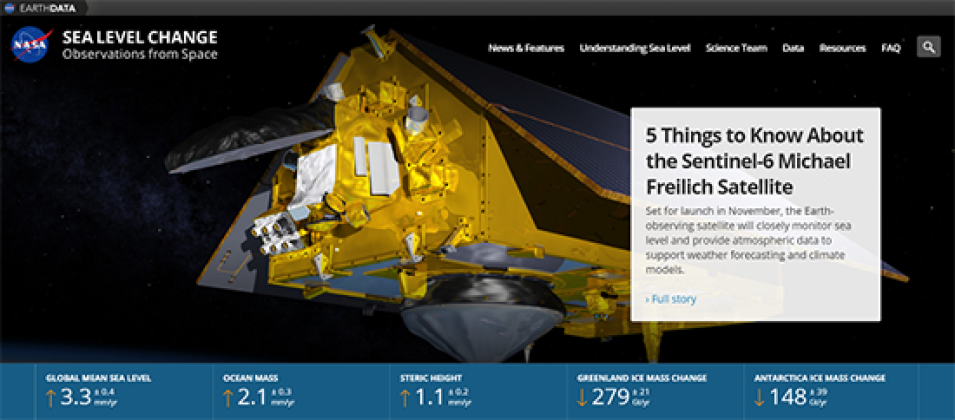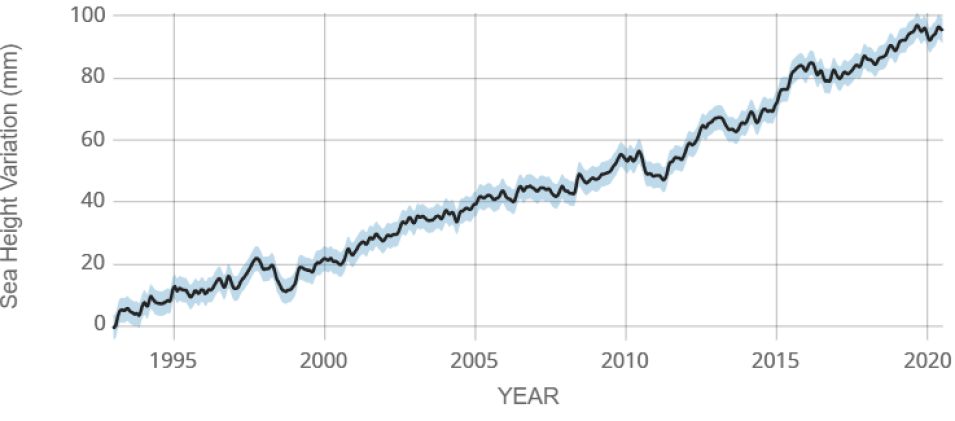For Dr. Carmen Boening, sea level change is personal. As the principal investigator (PI) for NASA’s Sea Level Change portal, she leads the team that maintains the portal as a collaborative platform for sea level change research. The portal was established in 2013, and features data, animations, articles, mission profiles, and a wealth of easy-to-interpret charts, tables, and graphs.
The launch of the Sentinel-6 Michael Freilich ocean altimetry satellite mission not only continues a satellite ocean altimetry record stretching back to the early-1990s, but will open new frontiers of research through its improved instrumentation and the availability of its data via the portal. Dr. Boening is quick to note that while the portal originally was developed to bring together the various science disciplines involved in sea level change studies, it is a resource designed for anyone ready for a deep dive into learning more about sea level change.
What is the NASA Sea Level Change portal, why was it created, and who are the contributors to the site?
Sea level is an interdisciplinary problem involving a lot of different systems. Glaciers are melting and releasing water into the oceans; ocean circulation leads to regional differences; the hydrology of rivers and lakes are all contributing. It’s a very complex problem.
With the [establishment of the] NASA Sea Level Change Science Team, NASA wanted to increase the collaboration between the different disciplines that contribute sea level change data and research. There are a lot of science disciplines, like glaciology or space geodesy, that are within NASA and where we uniquely contribute. We created the Sea Level Change portal so that people have easier access to exchanging information between, say, glaciologists and oceanographers and hydrologists. The portal is a place where we can come together and collaborate.
The data on the Sea Level Change portal come mainly from NASA [Earth Observing System Data and Information System] DAACs [Distributed Active Archive Centers]. We bring together the data that are stored, for example, at PO.DAAC [NASA’s Physical Oceanography DAAC] or NSIDC DAAC [NASA’s National Snow and Ice Data Center DAAC] and make them accessible through the portal so every NASA sea level-related dataset is available in one place.
The Sea Level Change portal is also the website that specifically represents and highlights the science of NASA's Sea Level Change Science Team. The science team [principal investigators] contribute to the portal’s content, to the data, and all the latest and greatest knowledge that we are sharing.
I’ve been looking through the portal and see that there is a lot of new content. What can visitors to the portal discover?



